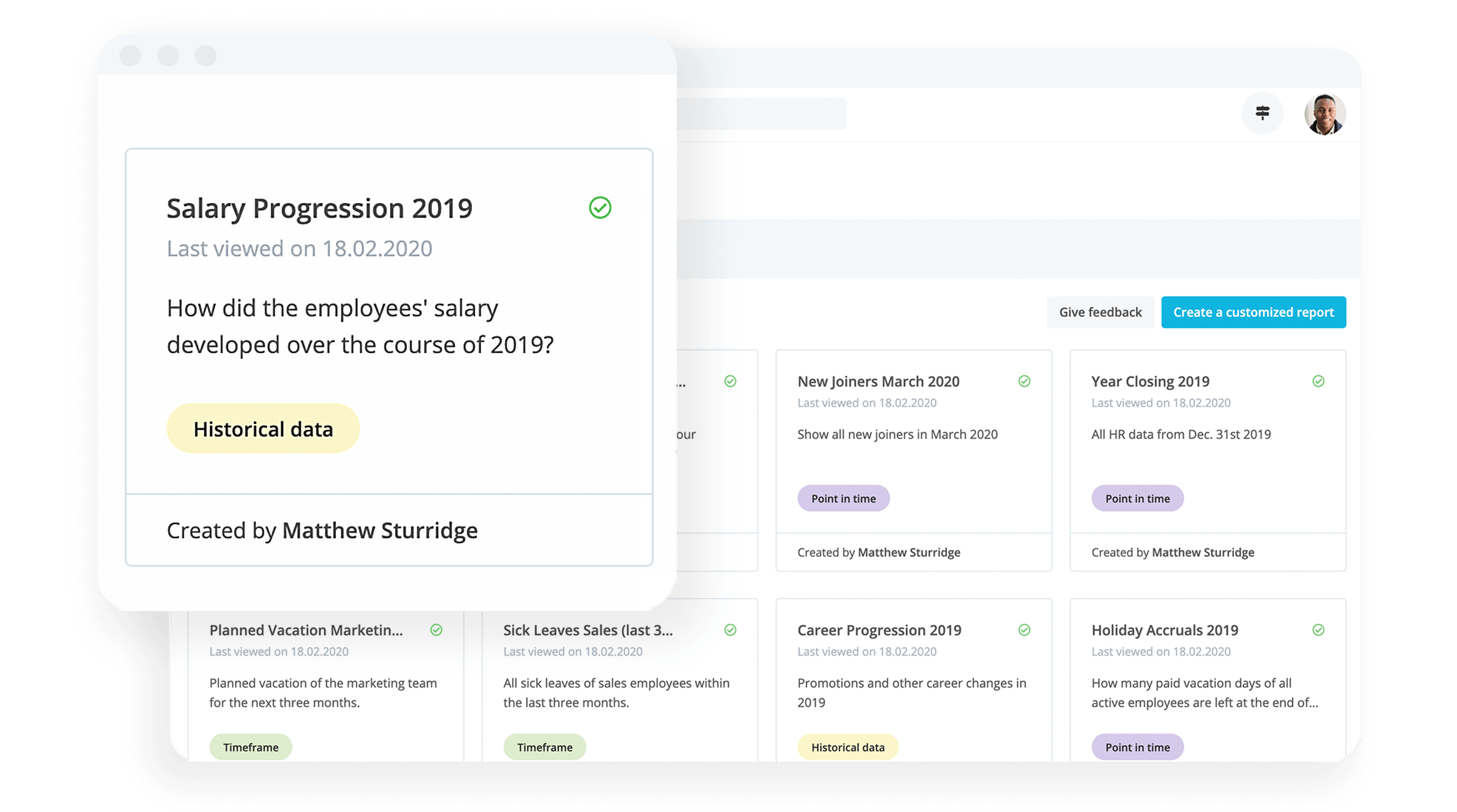
Start building your people strategy
Use this guide to power your next great people strategy.
Get your copy nowLatest Blog Posts
Managing toxic productivity at work
Toxic productivity hurts employees and businesses, and can lead to severe physical and mental health consequences for the people struggling with it.
Whether you’re coping with toxic productivity in your life or looking for ways to support your team at work, we share ways to spot its impact and the steps you can take to avoid it.
Key facts
Toxic productivity is the compulsion to constantly accomplish tasks, even during times of rest. Pressures at work can directly lead to toxic productivity.
The signs of toxic productivity include overwork, unrealistic expectations, resentment towards unproductive tasks, neglect of self-care and symptoms of burnout.
Avoid toxic productivity by helping employees set boundaries, seek help, encourage breaks and commit to unplugging from work.
Contents
- 1What is toxic productivity?
- 2The main causes of toxic productivity
- 3Spotting toxic productivity within your team
- 4Strategies to avoid toxic productivity
- 5The cost of toxic productivity to businesses
- 6What can HR do to help?
- 7Keep toxic productivity out of your business
- 8Frequently asked questions about toxic productivity
What is toxic productivity?
Toxic productivity is a trend where employees constantly feel the need to be productive. It typically involves pushing people to the brink, well past their limits, in order to get higher levels of output. In a lot of ways, toxic productivity is synonymous with overwork.
The main causes of toxic productivity
When you feel the effects of toxic productivity, it can seem like it’s the right way to feel. Work, society, and even our own brains can trick us into believing that we only have value when we are producing something.
What follows are some of the main causes of toxic productivity…
1. Work pressure
Work is the source of more stress in the UK than any other cause. When corporate culture prioritises busy behaviours like unnecessary meetings and counting hours in the office, it becomes very difficult to keep mental wellbeing in the loop. Remote work sometimes exacerbates this problem if employees feel pressured to be available during all hours.
2. Societal pressures
Hustle culture influencers peddling the merits of a 4am wake-up followed by a day stacked with productivity have had a strong impact on society. While pushback has come for hustle culture, the effects can still be felt. Whether it’s competing for a promotion at work or competing for the badge of “best parent” at your child’s school, it’s hard to escape the feeling that the world expects us to in fact stay in competition with ourselves and everyone else. The most busy and accomplished person wins.
3. Self-imposed pressure
Many of us have spent so long chasing productivity that we no longer know how to stop when we have the chance. We can’t read that novel because we need to clean the house. We can’t log out of the work computer because we want our boss to see us working late. It is hard to enjoy simple pleasures or take time to do nothing because we are constantly looking for the next task to complete.
Spotting toxic productivity within your team
With recent research finding over 40% of employees feeling exhausted and stressed, there is a good chance someone on your team needs help. To figure out whether toxic productivity is dragging your team down, look for the following:
Overwork. An employee that suffers from toxic productivity is going to seek out more work as proof to themselves and others that they are valuable. Note that this differs from an employee who has been assigned too much work in spite of preferring a realistic workload.
Unrealistic expectations. As with overworking, an employee with a toxic positivity mindset is going to believe they can accomplish more than is reasonably possible. They may also be unable to see the need for help in completing assigned tasks. When they are unable to meet their expectations, they are likely to feel guilty.
Avoiding unproductive tasks. Efforts that don’t directly connect to a goal can cause resentment in employees suffering from toxic productivity. You might hear them question the point of activities like team catch-up meetings that aren’t directly tied to project outcomes.
Skipping self-care. Employees who are in a toxic productivity mindset tend to undervalue activities that serve them personally instead of a project or goal. As a result, they are less inclined to leave time for exercise, rest, and spending time with loved ones.
Burnout. Employees who push themselves too hard can wind up experiencing burnout. Watch for the signs of burnout like increased absences, uncharacteristic mistakes or a sudden loss of motivation. An employee who has suffered from toxic productivity can exhibit these burnout symptoms as their body forces them to cope with pushing themselves too hard.
A decade of insights on corporate culture

Download one of our latest People Manuals on the subject of corporate culture and become a subject matter expert today.
Download it todayStrategies to avoid toxic productivity
Whether you’ve noticed the impact of toxic productivity in your life or want to keep it away, follow these steps to avoid the cycle:
Set boundaries (and stick to them). Establishing boundaries is the most important step you can take, and often one of the hardest. A key success factor for setting boundaries is being vocal. For example, if you want to set “off the clock” hours for your organisation, communicate that to your colleagues in advance so that it’s easier to stick to your commitment.
Encourage asking for help. Work with line managers to prioritise tasks and identify areas where work can be delegated or reassigned. You might also consider facilitating accountability partners or coaches who will help you keep your priorities straight.
Establish break routines. From micro-breaks of 5-10 minutes to step away from work to full days off to recharge. A recent study has found that even micro-breaks can benefit well being, while longer breaks can actually boost overall performance.
Commit to unplugging. From our work computers to our personal phones, it’s sometimes too easy to stay connected. Encourage setting aside time when employees completely step away from these electric tethers so you won’t be tempted to respond to work emails or scroll social media.
Establish realistic goals. Just like New Year’s resolutions, it’s easy to convince ourselves that in the future we will always be perfectly prepared to work at peak levels. In reality, that just isn’t the case. We get sick, we have bad days, or we don’t have everything we need to finish a project. Plan buffer time in your goal setting so that unexpected challenges don’t encourage you to sacrifice yourself to reach a goal.
Prioritise mental health. Toxic productivity can sometimes be a side effect of other underlying concerns. Identifying those concerns can help you avoid sliding back into toxic productivity.
The cost of toxic productivity to businesses
Toxic productivity hurts both employees and employers. Sadly, many people think that being constantly productive is the only way to prove worthiness to themselves and their employer. Meanwhile, many business leaders value employee well-being, but don’t know how to communicate that to their employees effectively.
Personal costs
Individuals struggling with toxic productivity can find themselves experiencing:
Burnout, which can decrease productivity, increase irritability, and cause a range of physical and mental health issues
Stress and anxiety, feeling overwhelmed, experiencing a sense of inadequacy, and becoming consumed by worries about meeting unrealistic expectations
Decreased well-being and feelings of emptiness in spite of achievements
Health issues from neglecting self care activities like healthy eating, sleep and exercise
Strained relationships when they prioritise work over spending time with loved ones
Impaired decision making from cognitive fatigue
Loss of meaning as life becomes a series of tasks rather than a meaningful journey
Business costs
Businesses also suffer losses when employees struggle with toxic productivity by experiencing:
Reduced employee engagement and motivation, which actually reduces productivity as well as creativity
High turnover rates as employees leave in search of healthier work environments, resulting in increased recruitment and training costs
Decreased innovation when employees who are solely focused on meeting short-term goals may not have the time or mental space to think creatively and come up with new ideas
Impaired work quality as employees make errors or accidentally cause product defects
Decreased team collaboration when employees focus more on individual achievements rather than working together for collective success
Diminished loyalty from employees who believe the company lacks commitment to their success and wellbeing, and therefore decrease their own commitment to company success
More data-driven HR is possible with Personio

Salary progression, headcount, sick leave and more, Personio's analytics and reporting function makes it easier to make strategic decisions based on data. Learn a bit more about how it works by clicking below.
Show me reporting with PersonioWhat can HR do to help?
HR plays a crucial role in shaping company culture and promoting a healthy work environment that avoids toxic productivity. Here are some strategies HR can implement to help prevent toxic productivity:
Ensure employees receive regular performance feedback. Help ensure employees are recognised for their contributions and have opportunities to provide feedback and gain clarification from their managers.
Promote work-life balance. HR can advocate for work-life balance by encouraging employees to take breaks and use their holiday time. They can also support flexible work arrangements and remote work options when those options support a better balance between work and personal life.
Coach line managers to lead by example. Line managers should model a healthy work-life balance themselves. When employees see their leaders valuing self-care and setting boundaries, it encourages them to do the same.
Provide training and education. Offer training programs on time management, stress reduction, and healthy work habits. These programs can help employees manage their workload effectively and cope with stress in a constructive manner.\
Promote open communication. Foster an environment where employees feel comfortable discussing their workload, challenges, and concerns with their supervisors and HR.
Implement wellness initiatives. Develop wellness programs that focus on physical, mental, and emotional well-being. These initiatives could include yoga or meditation classes, mental health resources, and employee assistance programs.
Train managers to identify signs of toxic productivity and burnout. Encourage them to address issues like increased absenteeism or behaviour changes promptly and offer support.
Review and revise policies. Regularly review company policies to ensure they align with a healthy work culture. If policies inadvertently promote overwork or discourage breaks, make necessary revisions.
Keep toxic productivity out of your business
In a world where constant productivity is often glorified, it's crucial to recognise the detrimental effects of toxic productivity on both individuals and businesses.
By recognising the signs and causes of toxic productivity, we can take proactive steps to avoid falling into its trap. Individuals can break the cycle of toxic productivity for themselves, and are more likely to be successful with support from line managers and HR.
This should form the basis of your overall people strategy. As an organisation, how are you ensuring that your people and your organisation are aligned to succeed together? Download our guide today for a head start.
Frequently asked questions about toxic productivity
What are examples of toxic productivity?
If you suffer from toxic productivity, you might find yourself feeling anxious when you try to rest. It is also common to take on unrealistic amounts of work or neglect taking care of yourself.
Is toxic productivity a mental illness?
Toxic productivity is not a mental illness, but it is linked with feelings and behaviours that can identify mental health struggles. For example, toxic productivity can lead to anxiety and depression, which may signal a need for help from a mental health professional.

